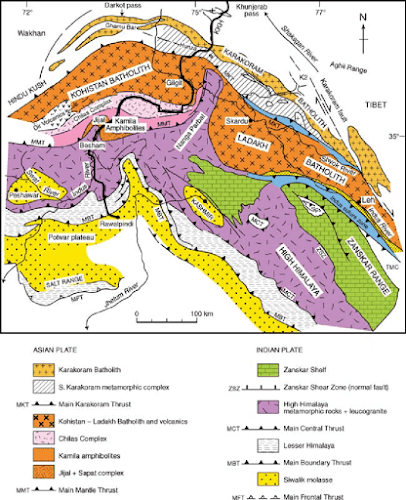Pakistan is split along the boundary where Indian plate slides
along the Eurasian Plate towards north along the fault zone. This fault zone is
a transpressional strike slip fault called Chaman Transform Fault Zone. It starts
from the south at the tripple juction of Indian, Arabian and Eurasian
Plate. Towards north it crosses the Herat transform fault and meets the Pamir
thrust System. It splits the southwest part (Baluchistan area) of
Pakistan. Therefore the major part of the Baluchistan Province lies on the Eurasian
Plate.
In the North some
of the area of Pakistan like Hunza lies on the Karakoram Microplate, which is
now considered as a part of Eurasian Plate. Some of the area of Pakistan like
Kohistan, Kalam, Gilgit and Chilas lies on the Kohistan Island Arc, which is
separated from the Indian Plate through the Main Mantle Thrust. The main
portion of Pakistan like Punjab, Sindh and Khyber Pakhtukhwa lies on the Indian
Plate.















